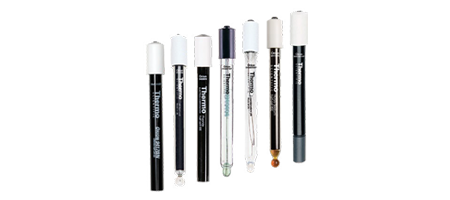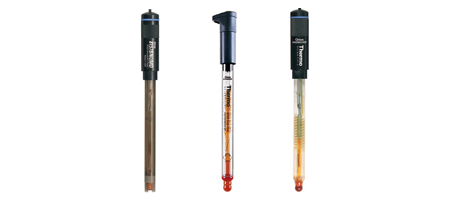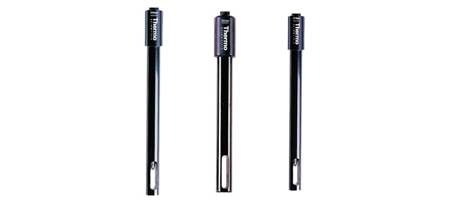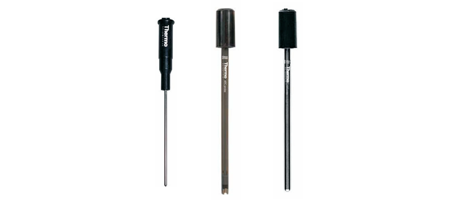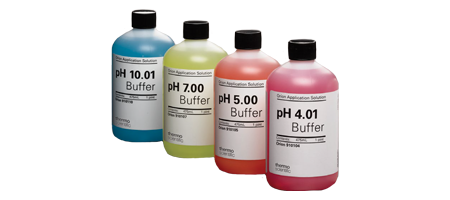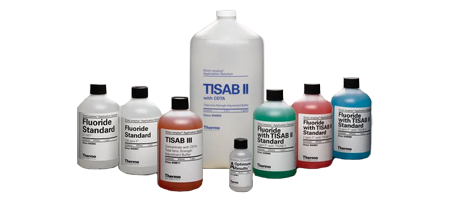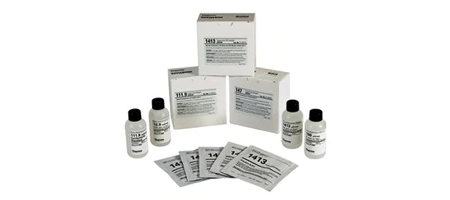5 Things to Consider
in Choosing the Right pH Electrode
Choosing the right pH electrode is crucial for product quality, efficiency, and process safety, as it enhances reliability on measuring pH levels. Furthermore, with the right application of the correct type of electrode, you can reduce costs in calibration and upkeep. Now, how do you choose the right electrode for pH measurement?
What to consider in choosing a pH electrode
With numerous differences in the shape of the electrode, the internal junction, and the body materials, shopping around for pH electrodes could take a huge chunk of your time. Add to that are the myriad product lines, electrode styles, and components available on the market. So, to make it easier, carefully consider these factors when choosing the right pH electrode:

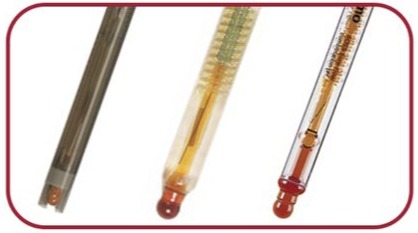
Body Material
First, consider the material used to make the body of the pH electrode based on your intended application. Different sampling conditions require different electrode styles and components. For example, specialized ion-sensitive glass body electrodes are useful for determining concentrations of sodium, lithium, ammonium, and other ions.
On the other hand, you can also choose the body material depending on temperature and handling. You should use Polymer body electrodes such as epoxy in applications that will use low to medium temperature ranges, especially for inorganic samples. For temperatures above 100ºC, glass body electrodes are ideal.
| Glass Body | Epoxy Body |
|---|---|
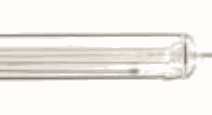
|

|
| Compatible with virtually any sample, including solvents | Extremely durable, rugged body prevents breakage |
| Easy to clean | Electrode bulb protected by bulb guard |
| Can handle higher temperature | Low-maintenance gel-filled can be used in higher temperatures than glass low-maintenance electrodes |
Glass Vs Epoxy
Glass body electrodes have a wide temperature range based on the particular electrode style and can withstand heats of up to 230ºF or 100 to 110ºC. Furthermore, these are highly compatible with any type of material, even providing chemical resistance to extremely corrosive substances and solvents.
After-clean is much easier with glass body electrodes, too. However, do take extra care when handling such items. Even a tiny crack on the electrode bulb and body can cause errors in future readings.
For high-impact resistance, epoxy body electrodes are ideal. These are also more economical for places where rough handling is unavoidable. However, their uppermost temperature limit is much lower compared to glass body electrodes.
Fill Type
You should also be wary of the fill type of your pH electrode aside from the body material. Sealed pH electrodes are low maintenance, so they are very cost-effective. Sealed designs with polymer filled reference solutions apply to a wide variety of uses such as reading samples containing Tris buffer solution or protein material. These also have a better response time.
In comparison, electrodes with gel reference solutions, while having a relatively good response time, are useful in a variety of demanding jobs with an average shelf life of about a year. Since the samples can come into contact with the fill type, it can, however, get contaminated or depleted. So, you will replace them eventually.
On the other hand, refillable electrodes have a more extended lifetime, with faster response time and better reliability.
|
Refillable (Glass or Epoxy Body) |
Polymer Filled (Sealed Glass or Epoxy Body) |
Gel Filled (Sealed Epoxy Body) |
|---|---|---|
| Filling solution required | No filling solution needed | No filling solution needed |
| Easy maintenance, periodic filling and draining needed | Low maintenance, sealed reference | Low maintenance, sealed reference |
| Longer expected life | Easy to use | Easy to use |
| For use in a wide variety of applications | For use in a wide variety of applications | General purpose for everyday use |
| For Best precision, 0.01 to 0.02 pH | 0.02 pH precision | 0.05 to 0.1 pH precision |
| Most rapid response time | Better response time | Good response time |
| Longest warranty, 1-2 years (6 months for Ag/AgCl micro electrodes) | 1 year warranty | 3-6 month warranty (18 months for ROSS 8107 models) |
pH Body Styles
| Standard | Semi-Micro | Micro | Rugged Bulb | Spear Tip | Flat Surface |
|---|---|---|---|---|---|

|
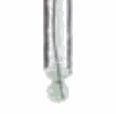
|
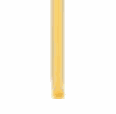
|
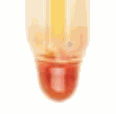
|

|
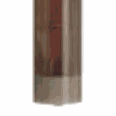
|
| 12 mm diameter | 6-8 mm diameter | 1-5 mm diameter | Glass body | For piercing solid or semi-solid samples | For measuring surfaces of solid or gel samples |
| Used in a wide variety of samples | For small samples sizes down to 200 uL | For samples as small as 0.5 uL and containers as small as 384 well plates | Extra durable pH bulb to prevent breakage | Can be used for small volumes | For use with small volumes |
Electrodes also have a selection of pH body styles that suit different applications:
-
Standard electrodes are used for general purposes and measure approximately 12 mm in diameter.
-
Semi micro-electrodes measure approximately 6-8 mm in diameter. These are capable of reading sample sizes down to 200 microliters.
-
Micro-electrodes are around 1-5 mm in diameter. These are used for application in sample sizes of around 0.5 microliters, as well as containers of around 384 well plates.
-
Rugged bulb electrodes have a glass body, and as the name suggested, a rugged design. Highly durable, pH bulb for added strength and durability. Ideal for fieldwork.
-
Spear tip electrodes are perfect for piercing semi-solid samples such as meats and cheeses. These are especially good for small volumes of samples.
-
Flat surface electrodes are useful for determining the pH level of surfaces, gels, and solids. These are also good for small volumes of samples.
| ROSS Ultra/ ROSS Reference | Double Junction Ag/AgCl | Single Junction Ag/AgCl |
|---|---|---|
| 0.01 pH precision | 0.02 pH precision | 0.02 to 0.1 pH precision |
| Best measurement response time | Better measurement response time | Good measurement response time |
| Best temperature response | Good temperature response | Good temperature response |
| Ideal for TRIS protein and sulfide samples | Ideal for TRIS protein and sulfide samples | General purpose for everyday use |
| Variety of body styles and types | Variety of body styles and types | Variety of body styles and types |
| Refillable or gel filled design | Refillable, polymer or gel filled design | Refillable or gel filled design |
| Sure-Flow Sleeve and Open | Ceramic and Glass Capillary | Wick and Glass Fiber |
|---|---|---|
| Best junction for dirty, difficult samples and demanding lab use | Better junction for routine lab use in a variety of samples | Good junction for routine lab use or field use in buffers and aqueous samples |
| Junction is clog free, easy to clean and has longest use life | Junction is high quality and durable | Good junction with durability |
| Ideal for thick or vicious samples, compatible with all sample types | Ideal for most lab applications and sample types | Ideal for basic lab applications and aqueous samples |
Reference Electrolyte
To increase the stability of the electrode potential required for pH measurement, you must also include the reference cell in your things to consider.
Usually, the reference design of electrodes is either single or double junction. If you need to test samples that either contain heavy metals such as nickel, cadmium, copper, chromium, and silver; sulfides, iodized, cyanide, polymers, or other materials with chloride or silver ions, then you will most definitely need double junction electrodes.
By isolating the reference electrode, double junction electrodes can minimize reference fouling even when sample ingress happens. Furthermore, silver precipitation, which can clog the junction, is reduced because the outer fill solution is silver-free.
Single junctions electrodes, on the one hand, are less expensive. However, these are high risk for reference fouling or contamination. Conditions such as high temperature, high pressure, and high acidity or alkalinity in solutions reverse the positive electrolyte flow through the junction, causing the sample to ingress into the reference compartment and resulting electrode failure.
Nevertheless, ROSS reference electrodes are compatible with a variety of pH body styles and types. With the best measurement response time and temperature response among reference cells, these electrodes are ideal for the application of samples such as Tris buffers, sulfides, and proteins. These electrodes also come in a refillable or gel-filled design.
Get more accurate & instant results with Electrodes and Solutions brought to you by SECO
Your SECO team is committed to providing you with top-of-the-line lab equipment and supplies, from the selection down right to the hassle-free shipping. Not only will you find the best ion-sensitive ISE and pH electrodes here but also buffers, solutions, standards, and ISE meters. Analytical chemists and microbiologists trust SECO. Get all the right products all in one place.
